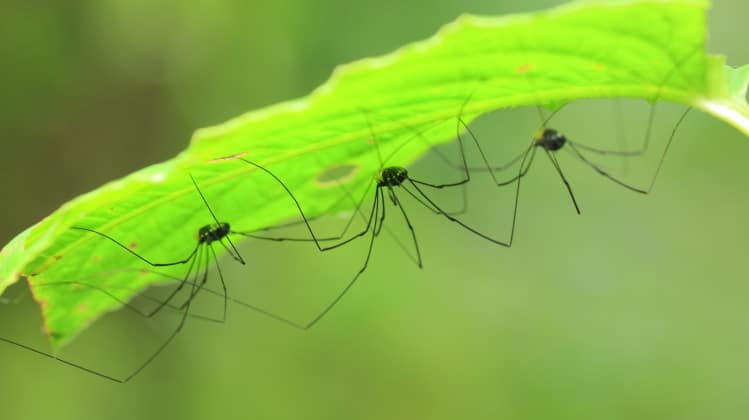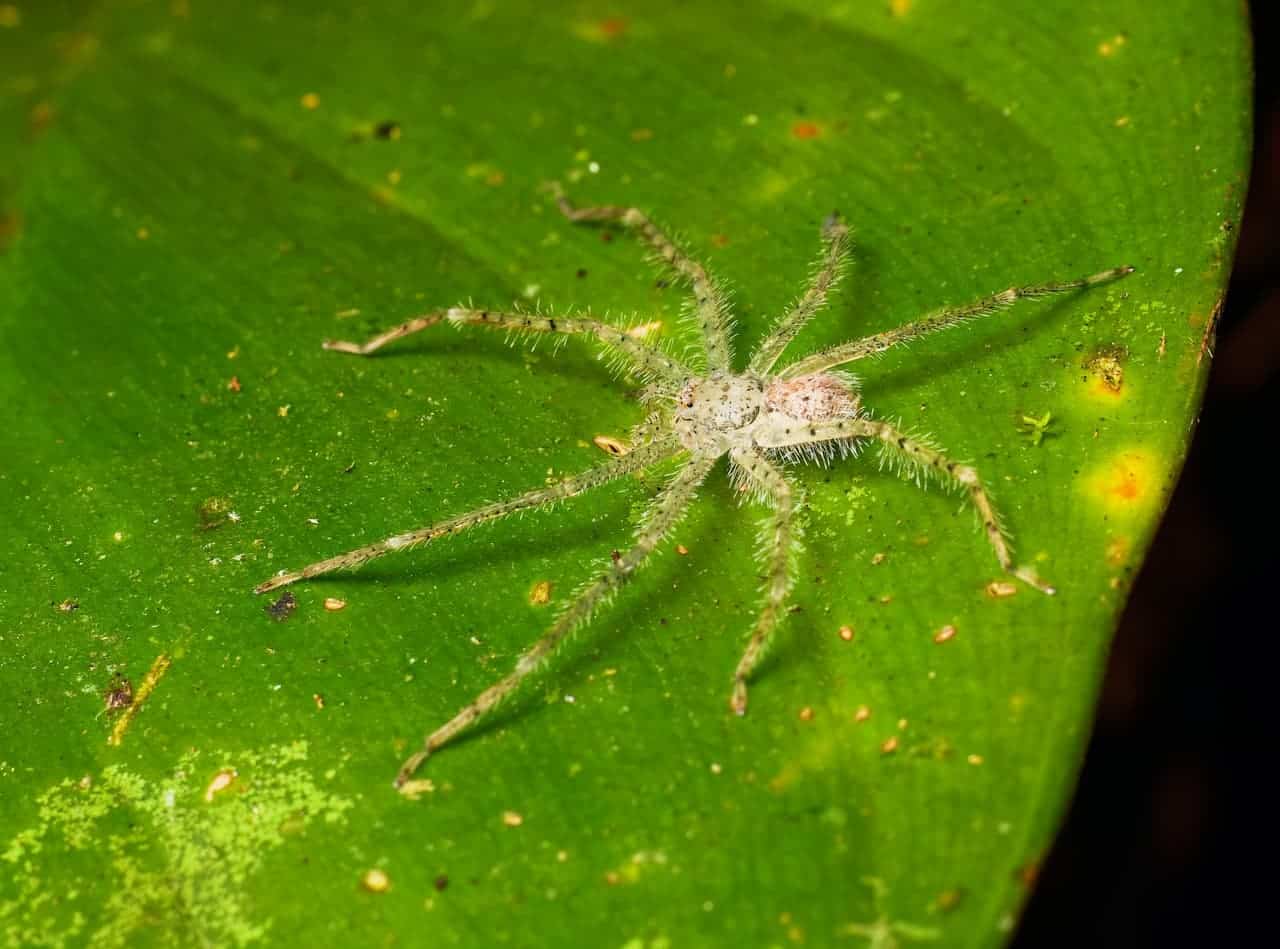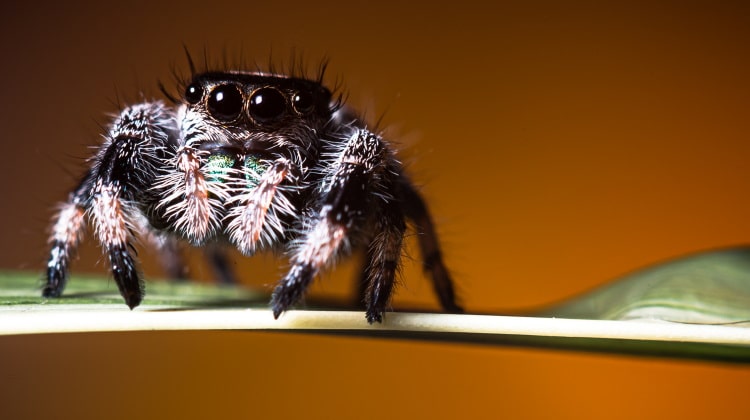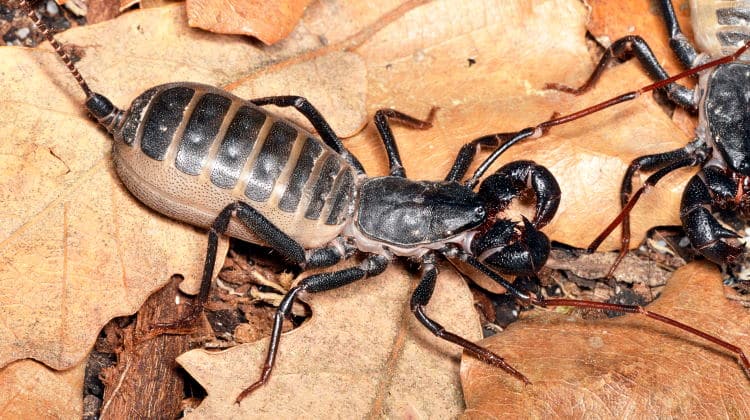Spider Webs 101: The Evolution & Types Of This Engineering Marvel
The Spider Web of Evolution
OK, if we’re going to take a good look at the spider web and how it evolved the way it did, we’ll need to use an awful lot of very big words – it doesn’t matter if you can not pronounce them all.
The important thing is that we have two groups of spiders, one of which we call ‘primitive’ and the other ‘advanced’.
The ‘primitve’ Orthognathans have chelicera (fangs) that flex up and down, i.e. they bite wholly vertically, while the ‘advanced’ Labidognathans have chelicera that flex sideways i.e. they bite at least partly, horizontally or down and inwards at the same time.
So here we go, take note that the order Araneae (Spiders) is traditionally divided into three divisions; the Mesothelae (also known as the Liphistomorpha), the Mygalomorphae, tarantulas and relatives (also called the Orthognatha or the Theraphosomorphae) and the Araneomorphae, the rest of the spiders (also known as the Labidognatha).
However it is possible the Mesothelea are really a part of the Mygalomorphae, this would leave us with only two groups; the primitive Tarantula types (Mygalomorphae) and the more advanced Aranaeid type (Araneomorphae).
There are about 1,000 species in the Mygalomorphae (only one in the UK) and over 36,500 species in the Araneomorphae, of which more than 600 can be found in the UK.
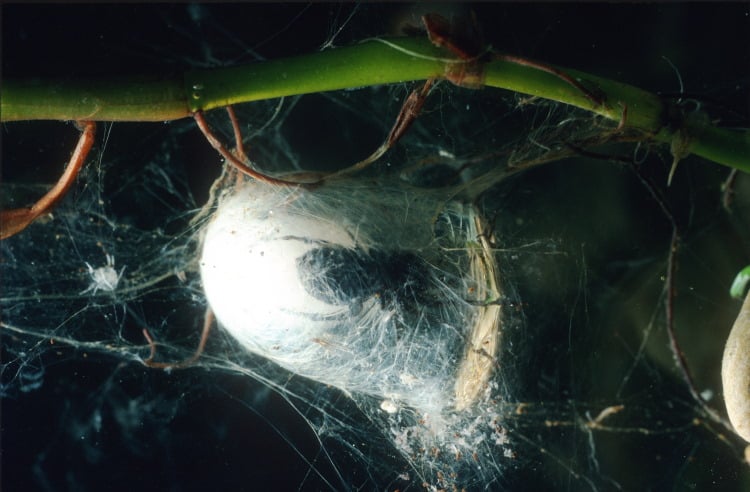
But what do these terms ‘primitive’ and ‘advanced’ mean?
It is all to do with our perception of time as running in a line, with a direction along which evolution is moving. Primitive characteristics evolve earlier and are shared by more species within a given taxa.
Spiders don’t seem to fossilize well, we have very few fossils from the Mesozoic era, 230 to 70 million years ago (MYA); and even less from the Paleozoic, 600 to 230 MYA.
In the more recent records of the Cenozoic, we have much better records due to the growing success of resinous trees which allowed for insects and spiders to be trapped in amber. By then however most of the spiders closely resemble modern species.
We have about 300 species of spiders from about 40 MYA. Three hundred is a very small sample of the thousands of species that must have lived then, but this is the best record we have. Moving closer to the present we have only about 100 species from only 20 MYA.
It All Started With The Orb Spider Web
It is suspected by scientists that the first spiders used silk only to wrap eggs and for sperm-webs.
The next step is believed to have been the lining of a burrow and the laying out of trip-lines, as described below. We are pretty certain however, that spiders were spinning webs to catch insects at least 160 MYA – or during the age of the Dinosaurs.
Spiders very similar to modern orb-web weavers existed 100 MYA, and this is one of the reasons that some experts think that the orb-web was one of the earliest webs constructed; and that many of the other sheet and dome webs made by modern spiders are derived from this.
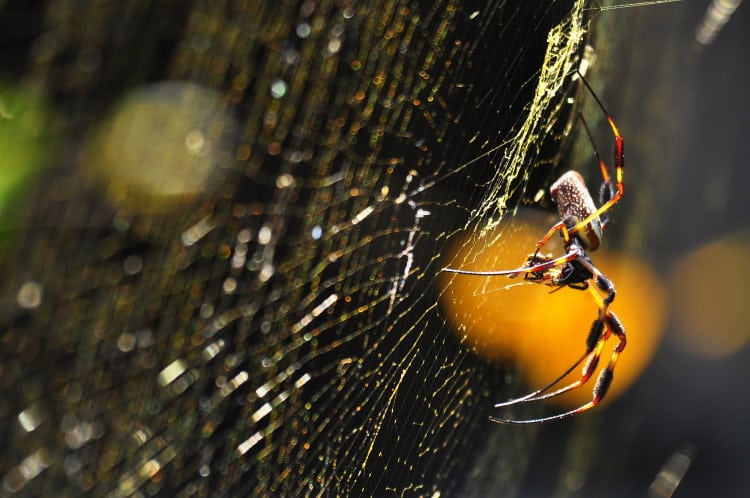
The first spider probably evolved from a crustacean like ancestor called a Eurypterid, during the early Devonian era of history almost 400 MYA. One of the most ancient spider fossils we know of is Paleocteniza crassipes, which walked and hunted on the earth in the late Devonian.
We would call this the most primitive spider of all, and all its characteristics would be described as primitive characteristics. Here ‘primitive’ just means those that came or were first.
Paleocteniza crassipes had 8 legs and chelicera that flexed vertically, so these two characteristics are ‘primitive’ characteristics. All spiders still have 8 legs so we cannot use that to help us understand spider evolution. However, about 250 MYA a new type of spider evolved that had chelicera that were slightly twisted around and that are now flexed partly sideways.
Because this characteristic evolved out of the first one, we call it an ‘advanced’ characteristic. Here we have only two steps; if we had three or more steps then, the middle ones would be called ‘intermediate’.
Unfortunately, in human society the word primitive is often used as an insult and means something that is no good -while advanced means good. In evolution there is no good or bad, except from a personal point of view – all of life is good.
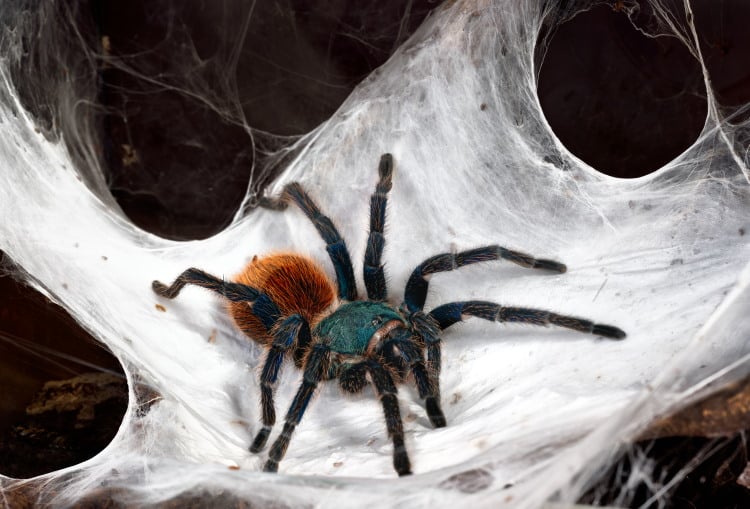
In fact many people would prefer a ‘primitive’ spider like a Tarantula to a more advanced spider like a Black Widow. You will also occasionally hear or read the terms ‘highly evolved’ and ‘more evolved’. These really refer to the number of observed evolutionary steps that can be discerned in the creature’s evolutionary history.
Again, being highly evolved is not necessarily good. Many of humanity’s most obnoxious parasites are more ‘highly evolved’ in terms of evolutionary steps, than humanity itself.
It is fun though to observe how characteristics and traits have evolved in animals.
Lets take a closer look at the use by spiders of silk in hunting. First I have to point out, that though we have divided the spiders into two (or three) main groups in terms of their taxonomic development, we have been left with over 36,500 species in one of our groups.
There are however two ways we can divide this large group up that will facilitate learning.
One is two divide them into active hunters and passive hunters. Or in other words, those who use silk to catch or help them catch their prey – and those who don’t. It may surprise you to know that many spiders do not use a silk snare at all.
They include all the Wolf spiders (2,261 species), Crab spiders (2,024), Mouse spiders (1,957) and Jumping spiders. Jumping spiders are the family Salticidae, which with 4,869 members is the largest single family of spiders in the world.
The second division is based on how spiders spin their webs. Some spiders use sticky silk to trap their prey in their web, and some use a mass of very fine tangles a bit like Velcro (or a tangled fishing line); more correctly this is called ‘hackle band’.
This second type of spider has a special organ called a ‘cribellum’ to help them spin this sort of web – and they are therefore, called ‘cribellate’ spiders. The rest are referred to as ‘ecribellate’.
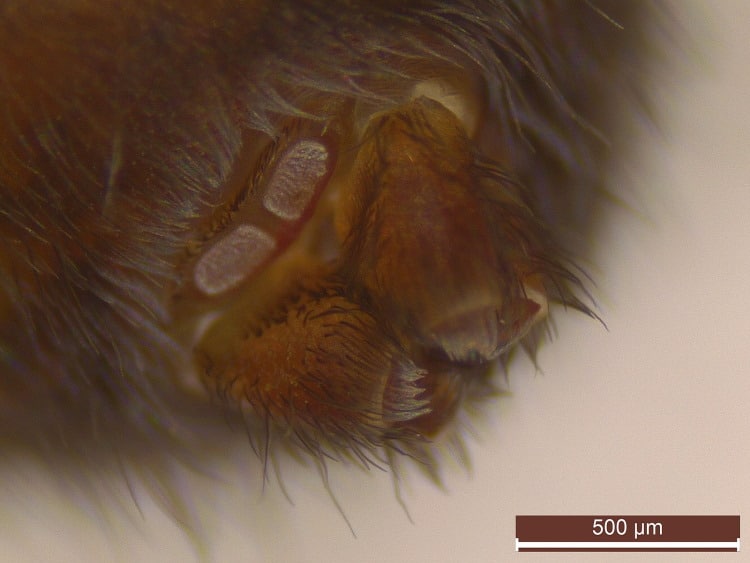
Now the interesting thing is that the lineages of these two groups of spiders separated a long time ago – and in looking at the sort of webs spiders spin, we can see that the same sort of geometrical patterns have been developed by both types of spider independently.
Different Types Of Spider Webs
Amongst the more traditional spider webs, those that simply wallpaper a retreat hole and then have a few extended lines stretched out in front of the retreat, are considered to be the most basic. The trip-lines in front of the retreat do not catch prey items, but do let the spider hiding in its hole know that there is something out there.
It can then check this out, rushing out to catch it if it seems to be edible.
Tarantulas and many other spiders such as the European Segestria florentina live in a silk lined holes like this. An unusual development of this basic plan is seen in the purse web spiders – family Atypidae such as Atypus affinis.
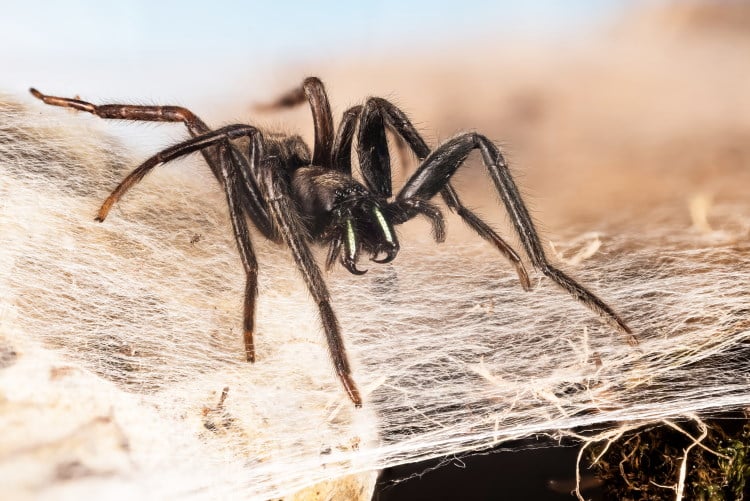
This European spider lives in a hole in the ground, like the simpler spiders mentioned above it lines its hole with web. However it also builds a sealed tube, often called a finger that extends from the apex of the hole some distance. When a fly lands on this web tube, the spider runs out along the inside of it and bites the fly through the web.
The fly, once bitten, is pulled in through the web and taken into the burrow where it is eaten. After its meal the spider repairs the rip in the web where the fly was dragged through it.
The house spider Tegenaria domestica hunts in a similar manner, except that instead of a few trip lines she has a whole messy sheet of web in front of her door. Any insect that lands on this is regarded as dinner.
From these humble beginnings, there have developed many more interesting uses of Spider Silk. Ranging from the horizontal sheet and tangle webs used by many different spiders; through dome webs of the Linyphiidae that you can see in any wood, garden or grassland; and on to the familiar Orb-web.
Interestingly scientists used to think that the evolution of ecribellate spider webs could be traced from the simple trip lines of Segestria, to the sheet webs of spiders such as Lepthyphantes, through spider webs of growing geometric perfection such as those of Linyphia and then Cyrtophora, to end in the orb-webs of Araneus.
Now however, it seems certain that the orb web may have developed first; and that the webs of Cyrtophora (and possibly those of Linyphia as well) may be derived from it, rather than precursors to it.
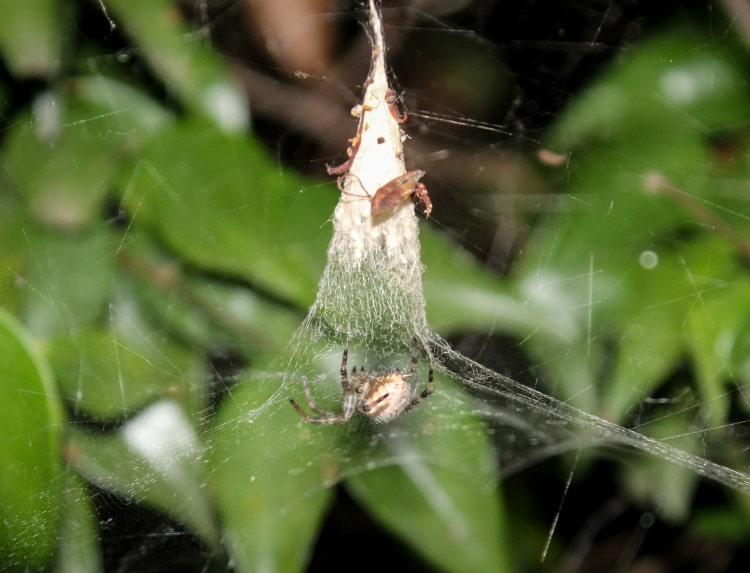
On the cribellate side of things, the sequence of development that was worked out 50 years or more ago seems more reasonable. Here we have a similar five stage development, starting with the simple hole retreat and a few trip lines (though these may have some hackle band on them) of Fillistata.
Stage two is recognised by the expansion of the trip lines into a catching plane, as in Eresus; and stage three by the abandonment of the stone or wood hole retreat, as seen in Dictyna. This allows the spider to occupy more parts of the environment, as the retreat is now built at the edge of the spider’s web.
In stage four (Sybota), we see the web develop a centric pattern (meaning it has a definite centre with catching threads and support threads). Finally in spiders like Uloborus we reach stage five, where we see a web that is basically an orb-web except that it has hackle band instead of sticky web.
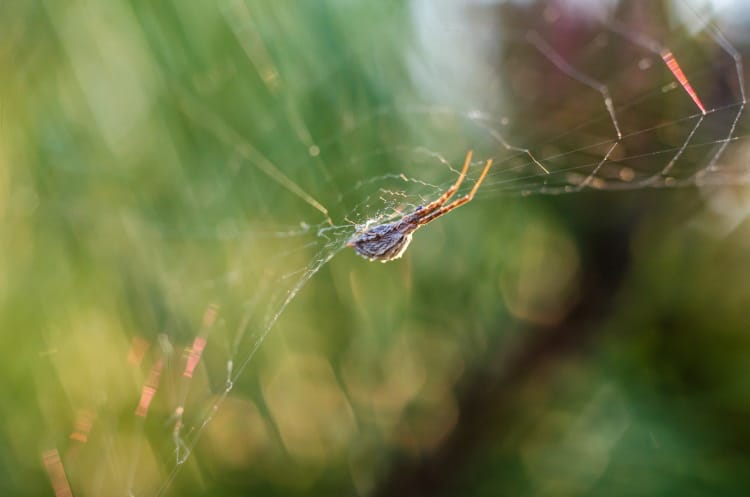
The fact that the basic geometric shape of the orb spider web – with its external boundary lines, its radial supports and its spiral of catching threads winding out from the hub – is seen in both cribellate and ecribellate spiders is interesting.
It can be interpreted in two different ways. Either, it is an example of convergent evolution – such as we see in many places in nature where two animals independently evolve the same characteristic simply because it fits the environment best. Or, it could support those theorists who believe that the orb spider web evolved before the division of the spiders into cribellate and ecribellate.
If this second scenario is the correct one, it would mean that all the non orb-web ecribellate spider webs are derived from the orb-web. The answer is unlikely to be found in the fossil record, if spiders tend not to fossilise well then their webs fossilise not at all.
The truth will, I am sure, eventually be sorted out through the use of methods such as protein sampling, DNA sampling and cladistic analysis.
Evolution is not finished… and it certainly didn’t stop for spiders at the orb spider web design. Many spiders show modifications of this basic form, many of which are simplifications.
The New Guinea spider Pasilobus ssp. builds a simple triangular web, consisting of only three radii and four sticky cross bars. This works because – if an insect flying past brushes against one of these strands – it breaks off from the outer radius and hangs down. In doing so, the free end swings around and sticks to the insect – which is then reeled in from the still-attached end by the spider.
There are also fascinating examples like Dinopis guatemalensis, the Net Casting Spider – which makes a net of silk web and then hangs upside down waiting for something to pass so that it can drop its net on to it.
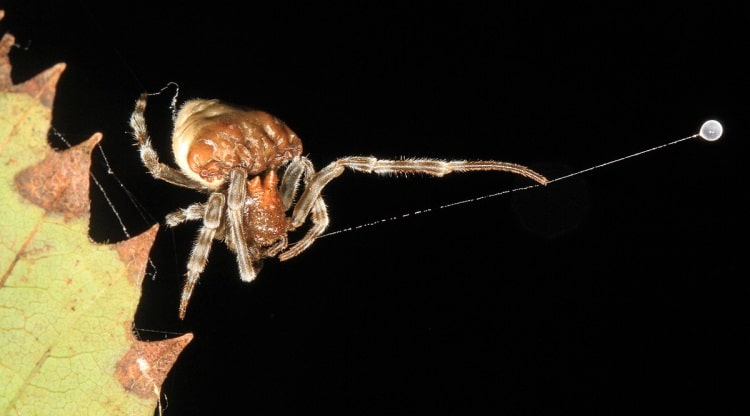
Or the Bolas Spiders like the American Mastophora ssp. which emit a pheromone that mimics the sex attractant used by certain moths of the genus Spodoptera (Army Worms). Males that are attracted to the false pheromone are then caught by the spider, using a swinging a stand of silk with a sticky blob on the end.
The moth gets caught in this – the original bolas – and then the spider hauls it in.
The real master craftsmen of the spider world are the orb-web spinners. Yet even within this group we can distinguish evolutionary paths. Spiders that build orb-webs, like other spiders, still have to deal with the insects that get caught in it.
This can be tricky as insects are often quick to escape. For instance flies caught in a web spun by Araneus sericatus escape in 5 seconds (on average) if left to their own devices. Also, the insect which is caught in the web may be large and aggressive – grasshoppers and crickets can kick quite hard and spiders do get hurt by them (not to mention bees and wasps).
Examples Of Orb Web Weavers
Three examples of orb-web spinning spiders are the genera Nephila, Argiope and Tetragnatha. They all use different methods to deal with their prey when it hits the web.
Nephila is a genus in which the females are large with bodies over 2 cm long and often much larger than that; they use what is thought to be a primitive response to trapped insects. When an insect enters the web of Nephila clavata, she is aware of it and has moved to be facing it in less than 0.5 of a second.
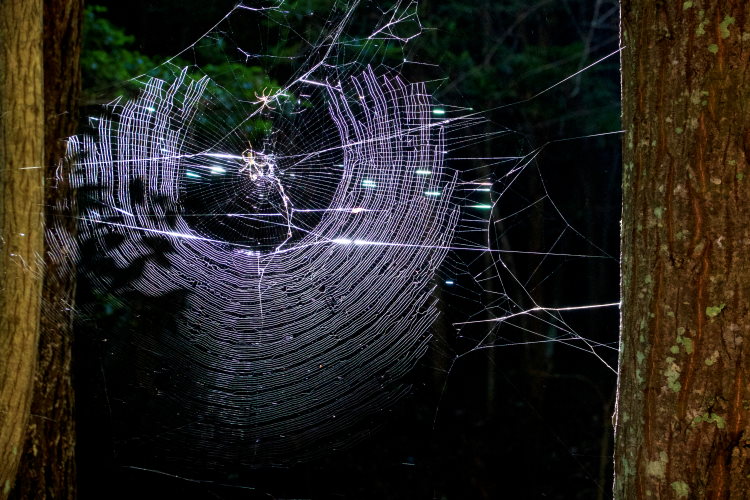
She then deals with it according to size. Small prey are bitten, held on the chelicera and immediately pulled out of the web – and taken to her retreat to devour. Larger, but not dangerous, prey are given a longer slower bite before being pulled out of the web. However large and potentially dangerous prey are treated with more respect; Nephila rushes in and delivers a quick bite – and then retreats to a safe distance just as quickly.
This can be repeated as many as 12 times, until the prey is sufficiently poisoned to stop struggling. Nephila never wraps her prey in silk.
Argiopids make their webs lower in the vegetation than Araneids and are better at handling Orthoptera (grasshoppers and Crickets). Conversely, Araneids with their higher webs are better at handling Diptera (True Flies) and Lepidoptera (Butterflies and Moths).
Lepidoptera, because their scales come off so easily, can escape from the sticky strands of a spider’s web very quickly – leaving only a few dry and tasteless scales behind. For this reason, Argiope argentata deals with them by giving them a good bite first and then wrapping them. Whereas other similar sized prey are wrapped first and then bitten. Despite this strategy more than half the moths caught by A. argentata escape again.
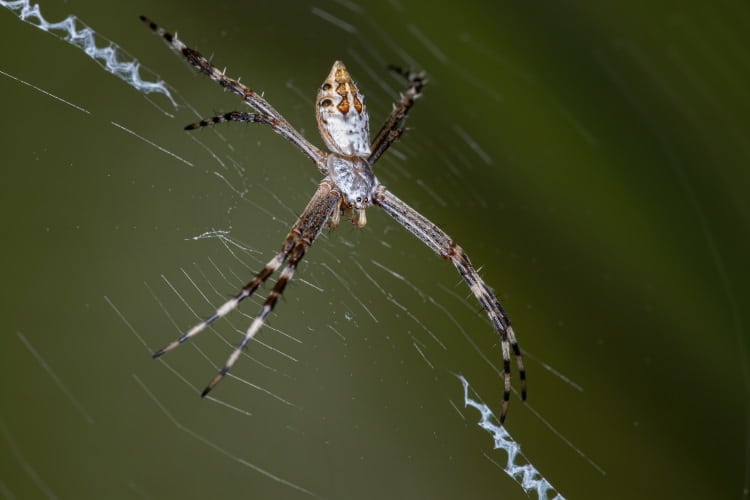
Most Araneids wrap all their prey before biting them. The most complex or advanced characteristics of prey handling are shown by the Tetragnathids, which rotate their prey with their hind legs while wrapping them – thus allowing them to deal with them much more quickly.
Tetragnathids mostly live in damp places and catch a lot of Mosquitoes and Craneflies; it may be that it is this difference in prey species which has allowed them to evolve this more efficient method.
Whatever the cause, it is interesting to see how prey capture and handling techniques in spiders have evolved. From biting without the help of a web; to using a web and then biting; to using a web, biting and then wrapping; to using a web, wrapping first and then biting; and finally to using a web and rotating while wrapping, before biting.
Now that you know more about spiders ,why don’t you take the opportunity to observe some spiders in action (at night with a torch or lantern). Watch some of your local spiders at work and note whether you can see if they wrap first or bite first.
Final Thoughts
Well, I hope you have learned something about the incredible complexity of the humble spider web… something to think about next time you brush one away in our house!
Spiders are really fascinating and often attractive animals and if you can learn to share your world with them in peace you will have added a little to your enjoyment of life.
Good luck
Next, See How Do Spiders Mate?
Bolas image license (credit: Judy Gallagher): creative commons

